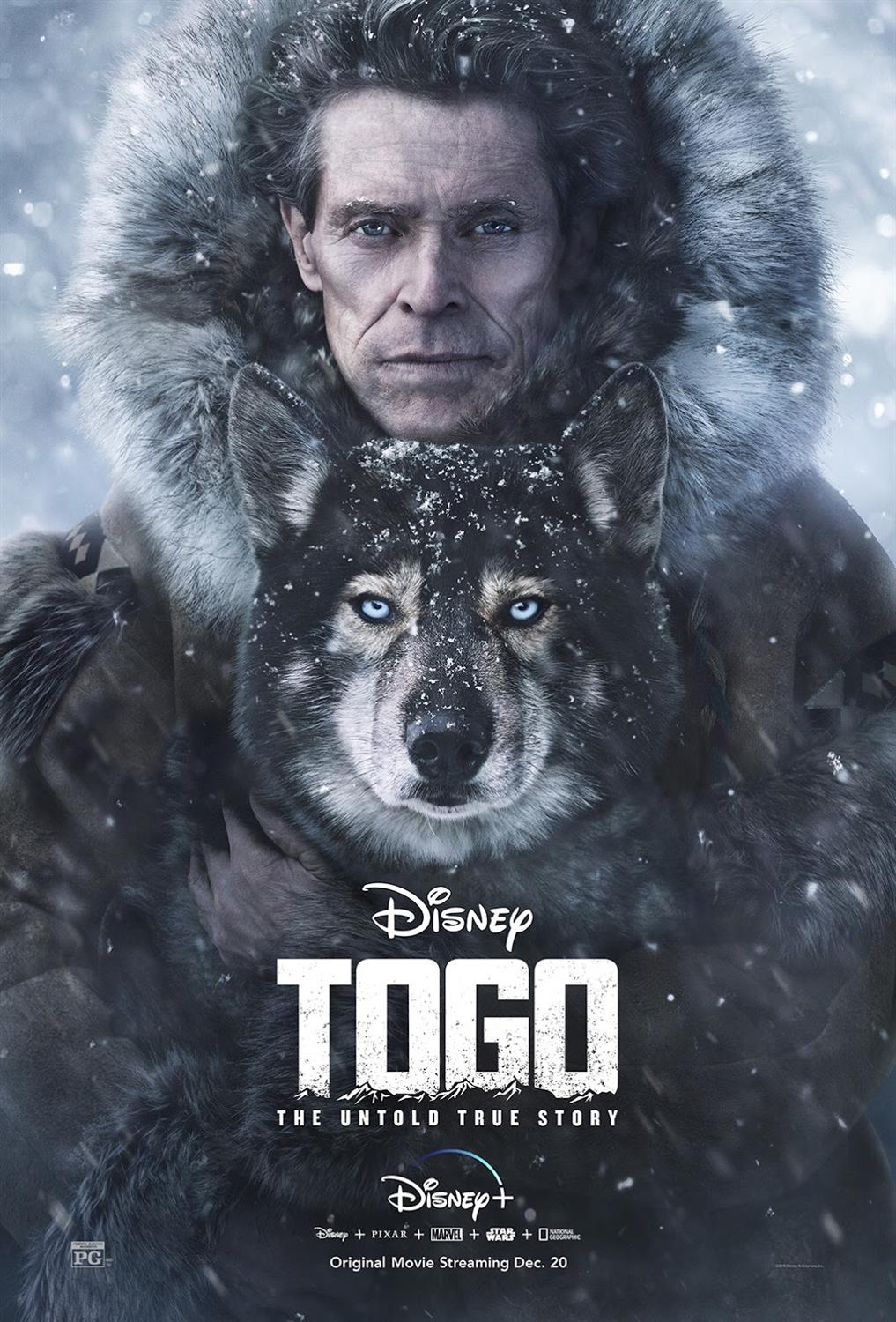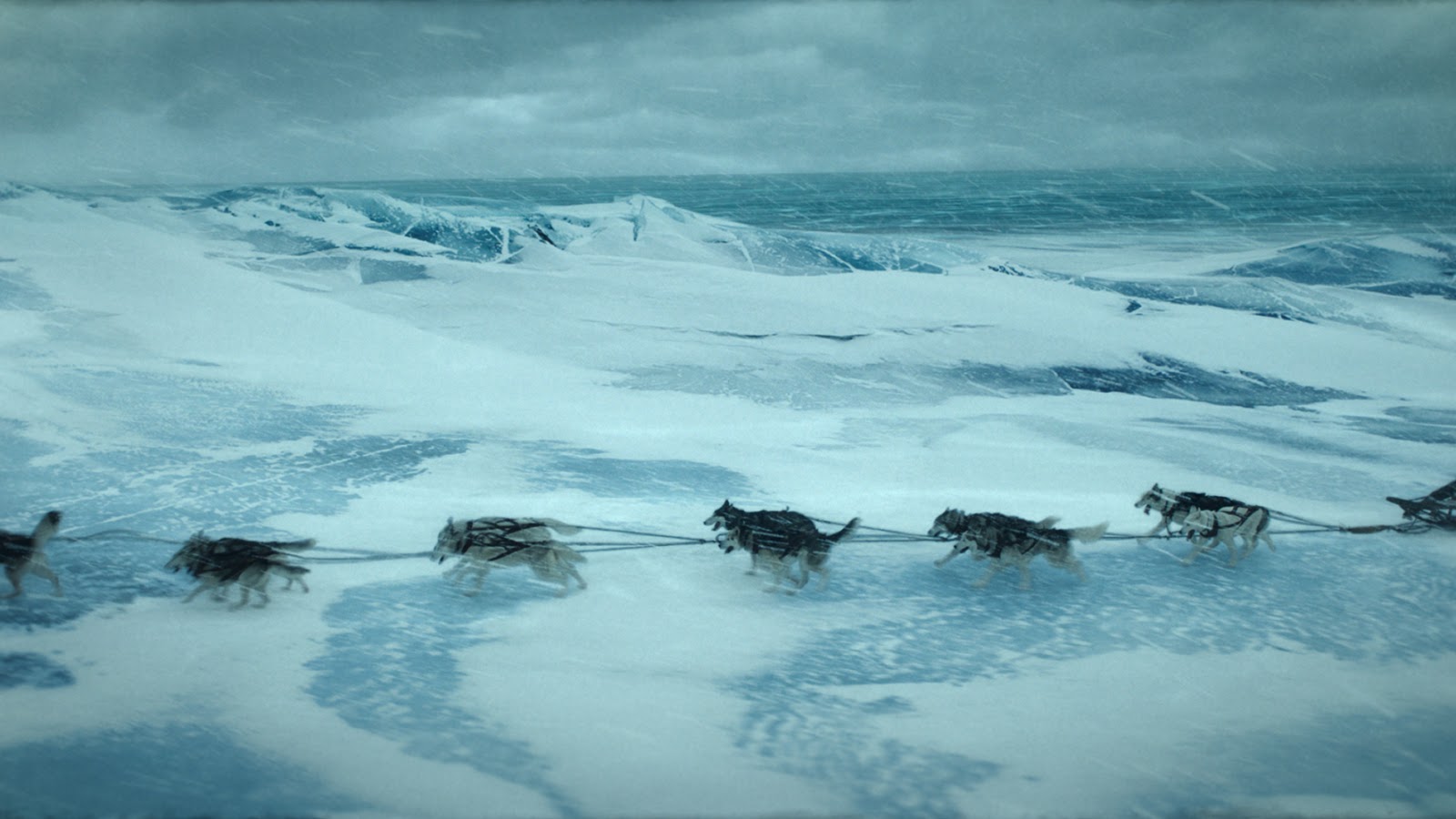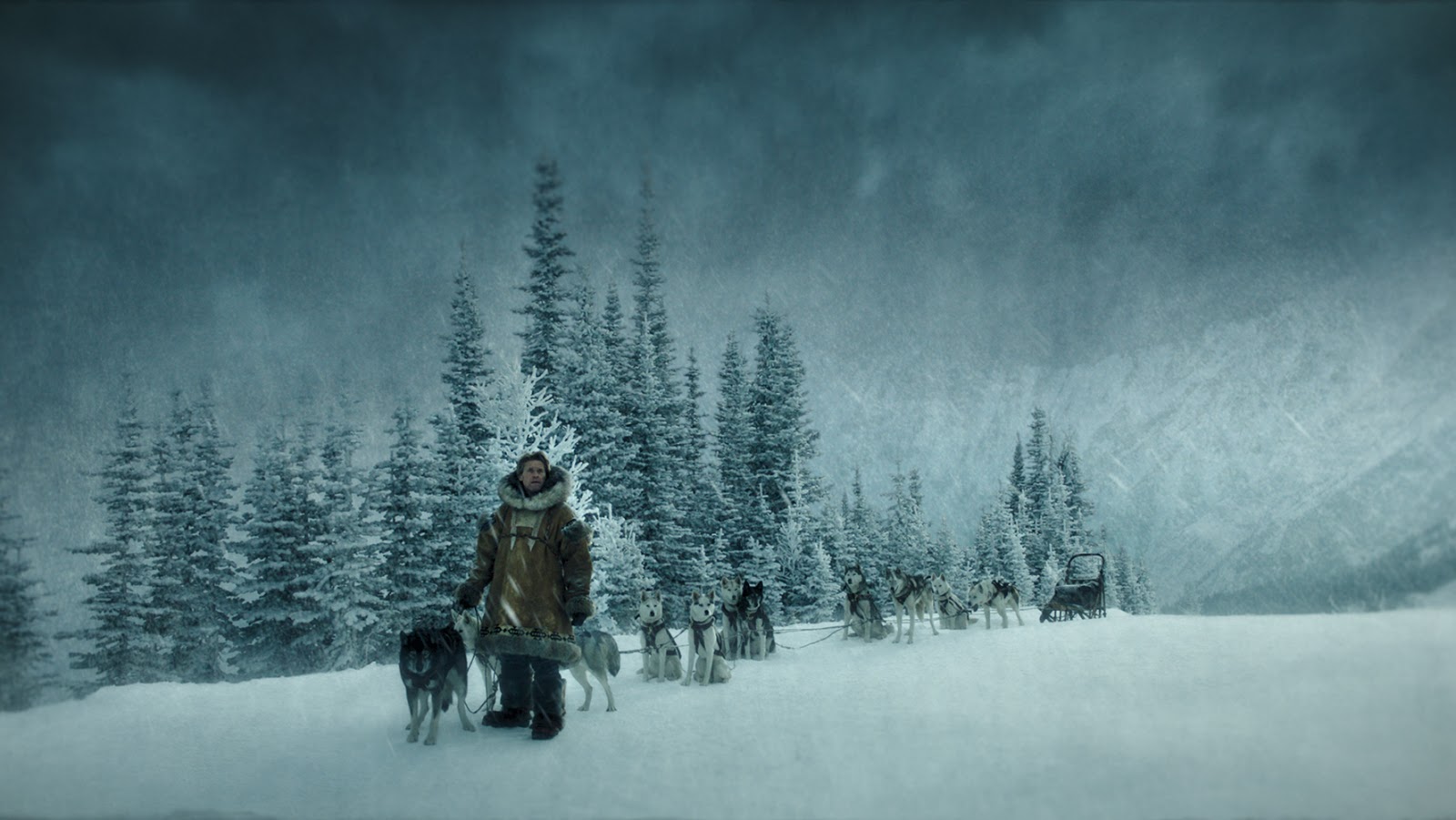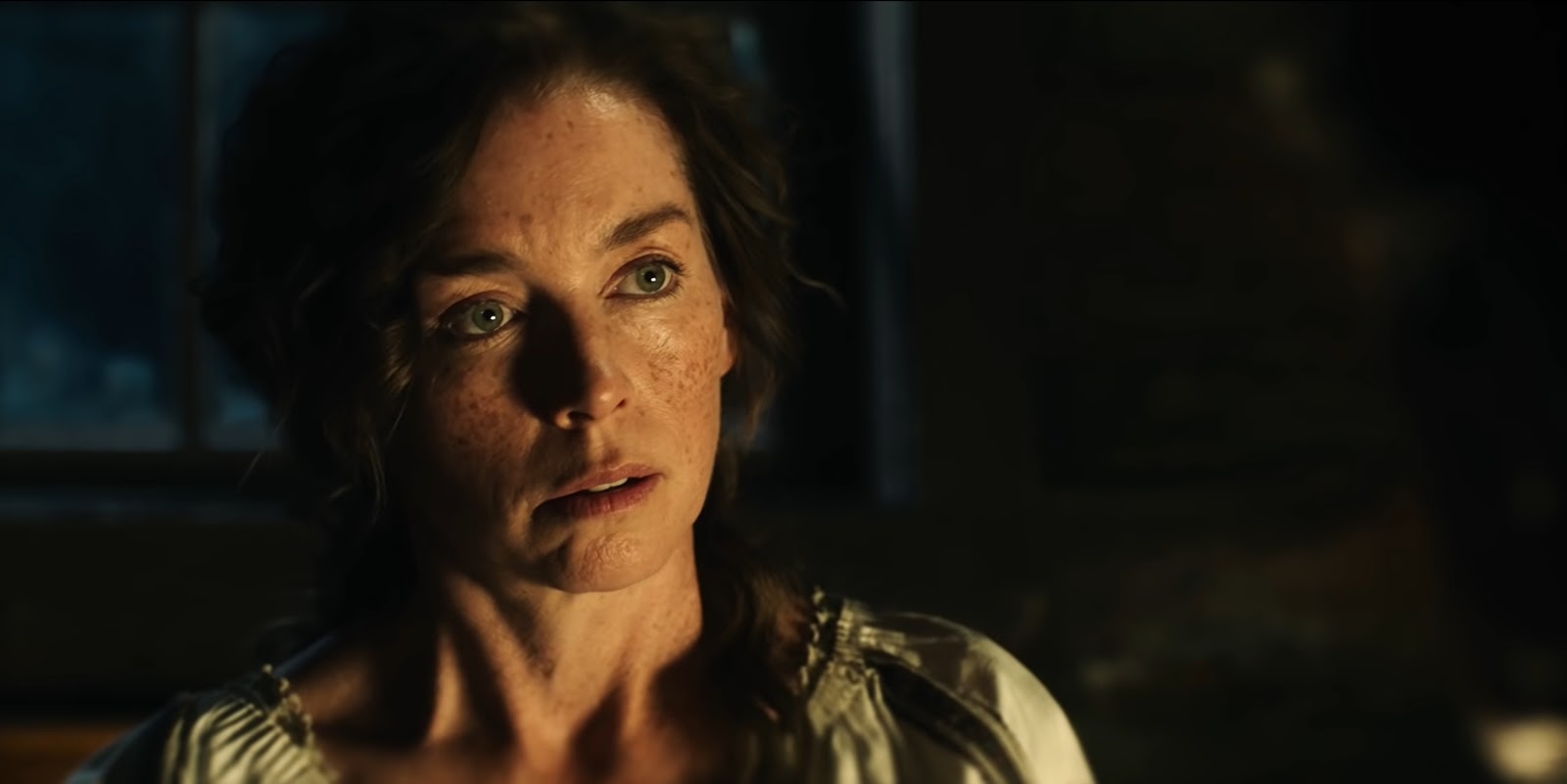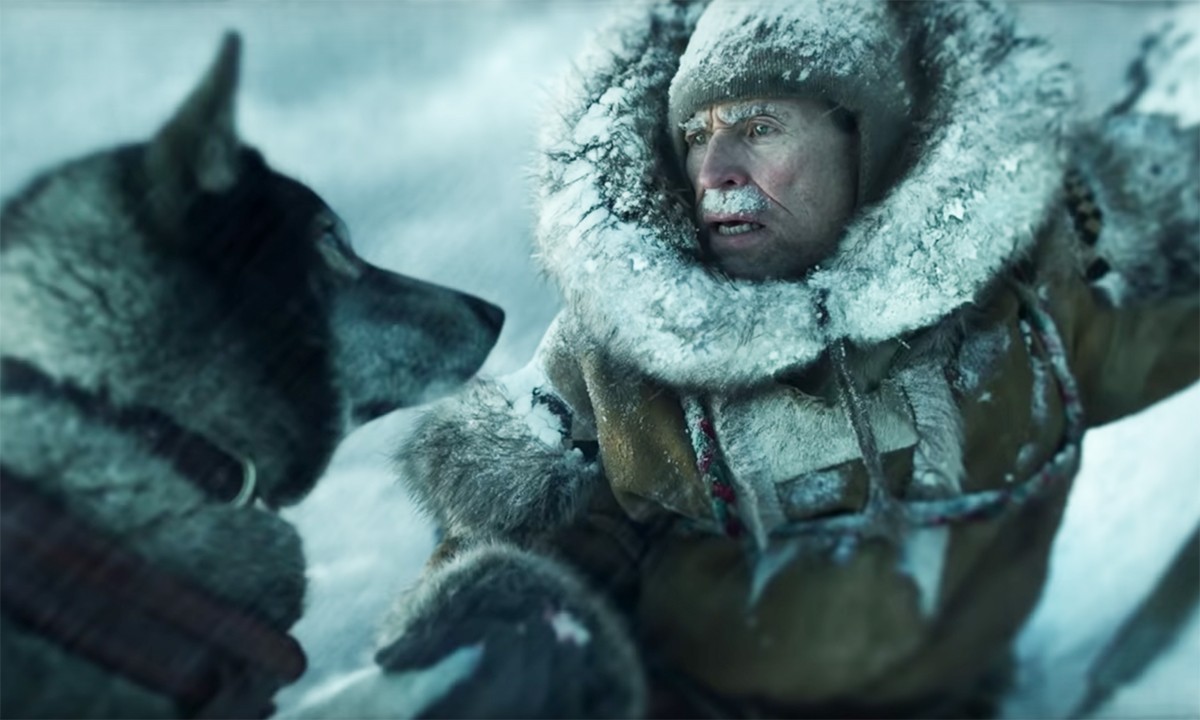Over the past four decades, storied actor Willem Dafoe has established a prolific career working with many of contemporary cinema’s most acclaimed filmmakers such as Martin Scorsese, Oliver Stone, Wes Anderson, David Cronenberg, Paul Schrader, and Robert Rodriguez, just to name a few. He is also well-known for playing the villainous Green Goblin AKA Norman Osborn in Sam Raimi’s Spider-Man, voicing Gill in Pixar’s Finding Nemo and Finding Dory, and as the sympathetic hotel manager Bobby in the Walt Disney World-adjacent drama The Florida Project.
Similarly, actress Julianne Nicholson has built up a filmography of over 60 titles, including memorably scene-stealing turns in the films August: Osage County, I, Tonya, and Black Mass. She also had recurring roles on the television series Ally McBeal, Conviction, Law & Order: Criminal Intent, and Boardwalk Empire, among others. Together, Dafoe and Nicholson are starring in the new historical action-drama Togo, a biographical recreation of the 1925 serum run to Nome, Alaska, and the real-life people and sled dogs who made it possible. I recently had the wonderful opportunity to sit down for a roundtable interview with the two actors to discuss their roles as Leonhard Seppala and his wife Constance.
Q: Did you know about this story at all prior to filming the movie?
Julianne Nicholson: I didn't know about the story, no. And it was one of the exciting things about being a part of making it, is letting this story be known. It's an incredible story and what Leonhard Seppala and Togo did, covering 260 miles where the other 19 teams I think ran an average of 31 miles, it's pretty remarkable, and they should have that credit.
Q: Can you talk about shooting on location and what that experience was like?
Willem Dafoe: It was [shot in] Alberta, north of Calgary. Really beautiful. Mountains, sometimes we were shooting above 8,000 feet. We spent part of the day getting up to location, and just maybe [a] four-hour window to shoot before we had to go down the mountain, for it to be safe. It was fantastic. It's beautiful.
The nature, the weather really gave us challenges because it's really hard to schedule things properly. And on top of just normal ebb and flow of regular weather, it was really snowy very early, much earlier than usual. Like in October we had a huge snowstorm, where normally we were going to shoot fall for fall. Makes sense, right? Well, we didn't have fall, we had winter all of a sudden in fall, and then when we got to winter, sometimes it was unseasonably warm and we didn't have enough snow. So we had to hop around and production was really crazed by doing that.
But it's really nice to shoot on location, and every day you wake up and you look out the window and that tells you what your day is going to be like. Sometimes it's a little scary, and when you look at the temperature and you see it's 50 below zero, I think there were a couple of occasions where we couldn't work because it was too dangerous for frostbite and the unions really said that we can't work on those days. So it was tough. Yeah. But you know when it's cold like that, no acting required, you're cold. It's a little taste of what he may have gone through and what she may have gone through, and [it] just helps you. You pay a little bit for the authority to pretend that you're that guy, you know?
Q: What was it like working with the dogs on set?
Nicholson: There were a lot of dogs around, and it adds a whole new element to being in the moment. It would sort of depend on the mood of the dog, if the dog was tired. They basically dictated the day. First it was the weather, then it was the dog. Then it was Willem. [laughs]
But it's definitely challenging. They're not going to necessarily go down on that mark when you ask them to every time, and you wanted to create that relationship with them. I think Willem and our main dog Diesel spent a lot of time together growing that bond, which is what you see on screen.
Q: Was it just one dog playing Togo?
Dafoe: No. Well, it was basically one dog. The principal dog was this dog Diesel, who is actually a descendant of Togo. Distant, but I think five generations. Then there were a couple of backup dogs if he was tired or something. And then of course there were lots of puppies for the puppy sequences, because they all learned little behaviors for various things. One would drag something, one could push, you know. They all knew these behaviors. They were great, actually.
Nicholson: Yeah. They made everyone happy. When they were just on set prancing around, everybody was like, ‘Oh, puppies!’
Dafoe: Yeah. They're just little balls of fur. They're so cute. [With] Diesel, you know, it's always difficult because they learn behaviors to prepare them [for shooting]. But when you get to set, it's a little lesson for actors. You can prepare, but when you get to set, it's nice that you prepared, but be willing to throw that all out, because the situation may be totally different and your preparation may not be appropriate. So you’ve got to be patient sometimes.
The main thing is you try [not] to expect human things from them. They're there because they're animals, and that is what keeps you on the story and doesn't get into a crazy thing where you anthropomorphize the dog and start to treat him like he is a person. You're always reminded that you're dealing with something raw, and something essential, and something that is unpredictable. But if you can wrap your head around that and accept it, then it's okay. It's just a question of being patient.
Q: Were you guys big dog people before, or did you walk away with a newfound appreciation for dogs?
Dafoe: Newfound. I didn't have a dog before.
Nicholson: Me [neither]. I've never had a dog before. It's an introduction.
Q: Can you talk about the difference between how the dogs behave when they’re outside of the harness and then when they get strapped in?
Dafoe: You know, I weigh like 145 pounds, so you're on that brake. And sometimes I had eight dogs, sometimes I had 11, and when they're ready to go, it's hard to hold them. In fact, normally there's a brake in the ground, but sometimes with the frozen ground it doesn't hold. So then you have to tie it up an extra line. So you're on that thing, but you've got to get off balance to pull the line. But they're pulling on it, so sometimes it's not exactly smooth.
So there's that moment where you're releasing, and you're giving the command to go… it's just terrifying. Because if you do that off balance, you'll crash. You'll crash immediately, and sometimes conditions and terrain aren't so good. So when they get going, there's an incredible amount of energy because the truth is they're bred, they're trained, they love running. It's like someone that knows that they're going to get an endorphin reward if they run.
Nicholson: They're adrenaline junkies, those guys.
Dafoe: Yeah. They want to go. They jump off the ground. They're very athletic, very strong.
Nicholson: And they're barking when they're ready, when they're all waiting. Because they have to wait for each one of them to get hooked up, of course. And the hardest thing they have to endure is waiting to actually get to go. So the volume is insane, and they get frenetic.
Dafoe: But it's fun because you get to know the team, and you get to know who's good at what. And also they have very specific positions. Some are really strong, some are faster, some are good leaders. So you know the personalities. And you learn that through the professional dog guys that know these dogs since birth. They love them so much, and they know them so well.
When they're not running, they're wildly affectionate. It's really hard to reconcile to imagine that ready-to-go, powerful, strong, pure animal to [transform into] this docile little animal that wants to be petted and rubs up against you and just wants to be cuddled. Those sled dogs had both those qualities.
Nicholson: That's true. It's very sweet.
Q: In the movie you train with the dogs both on the snow and on the land in the summer cart. Was one harder to maneuver than the other?
Dafoe: They were both hard because on the [dry] land it's very stiff. So if you hit a hole, or if something gets off balance, it's very unforgiving and it can fall. It's a little more dangerous because that summer cart, which they do use to train dogs off-season, that's a little iffy. The sled is a lot lighter. If the terrain's not good sometimes, like if you have a very frozen surface, it'll just skate over it. Even though the dogs are going, if there's any deviation, it can slide very quickly. And then when they're slack and then tight, bad things can happen.
The ideal thing is to keep everything very steady, keep the tension between the lines very taut. Not too taut because you don't want to hold them back, you don't want to put stress on them running, but enough that they're working as a team. Because if it gets too lax, then they get confused. [When] you see [a] picture [of dogsledding], it looks quite simple. The guy's standing up holding on, right? It’s a lot more complicated than that. There's a lot of finessing.
Q: How much training did you actually have to do?
Dafoe: The movie took five months to shoot. I was with the dogs almost every day, running the dogs– and they have to be run; that's part of their condition. That's part of what makes them happy. It's like a human being getting exercise.
I started out slowly, just being around the dogs, learning how to put on their harnesses, learning how to do the things that I do in the movie with grace and second nature, get it in my body just by [the trainers] teaching me. Learning how they dealt with the animals, and then getting behind the sled and just knowing when you get in trouble, when you don't, how to slow things down, how to stop. The usual stuff. There would [also] be some days when I was just working with this lovely one [gestures to Nicholson].
Q: Julianne, did you ever get on the sled?
Nicholson: I got on. Not in the snow, but in the summer cart, because the weather was so unpredictable and I didn't actually get a chance for one of the snow rides, which I was kind of disappointed about. But I did get a chance to go around in the summer cart. It's pretty amazing to experience and to watch.
Dafoe: It's also interesting because you're dealing with the dogs and then of course you're dealing with vehicles with cameras on them and all that stuff. It's not just about what you see [on-screen]. You're negotiating different speeds, of course terrain, and also keeping the proper distance and not getting too close. It's a good game. It was interesting. It’s demanding.
Q: What was it like filming the climactic scene on the ice?
Dafoe: That we filmed on a huge frozen ice lake, and then it was sweetened. The actual cracks were sweetened in post. It was really beautiful. You could lay on the [ice] between takes. Sometimes I'd lay on the ground in my parka and you could hear the ice groan. It was like a living thing. And then of course, there would be specific things set up every once in a while for the effects later, like where we had to jump.
But an amazing amount of the effects was practical. The sequence early on where we're on that slope, almost all of that was actual. The only thing that was different was when you pull back and you see this huge cliff, that wasn't there. But the actual slope and the actual falling and the actual danger and trying to hold on, that was all very real.
Nicholson: I feel like you can feel that. I watched it last night and you can feel those dogs struggling and slipping down.
Dafoe: Oh, it made me sick. It made me ill watching it because I remember how difficult it was. Everything was safe, because we were on lines, but actually you had to care more about the dogs because they don't have the ability to let you know when they're in trouble. Basically, the special effects were done when it got dangerous for the dogs and dangerous for me.
Q: What were some of the hardest scenes to film for both of you?
Nicholson: I didn't have really hard scenes. I would say the thing that was most sort of time consuming was just working around the dogs, because any given day there's a different [mood]. It's the same dog, but [it] depends on what he wants to give us.
Dafoe: And of course, the simplest things are the most difficult to do. Just having them be still, having them pay attention. It's difficult because they aren't all in agreement.
Nicholson: They haven't trained the same amount of time.
Dafoe: They can train behaviors, but they can't really train [them to] just sit there and listen; that's difficult. So I felt like a dog whisperer sometimes. I have to imagine that we can talk, I really do. I look at him and really believe, just like I do with an actress. [laughs]
Nicholson: Hey, I'm right here! [laughs]
Dafoe: No, but you know what I mean. I just remembered this scene in the bedroom, [a] very important scene when they're leaving, [the dog would] be all over the place. And I'd say, ‘What can we do? Make him look at me.’ That was early, so he wasn't comfortable with me yet. And the trainer said, ‘You're the alpha dog. He's not going to look you in the face, because that's a challenge, and you're bigger than he is. Not much, but you're bigger than he is. [laughs] So he's going to avoid paying attention like that.’
Nicholson: That last scene when you leave, also, after he's wounded, that was [difficult]. But Willem had endless patience. You would just go down there and be with him, and then they would capture it.
Dafoe: You have to believe that you have some contact, look deeply into those blue eyes, and try to make him feel you. [There’s] a little voodoo involved.
Q: Can you talk about how your characters’ relationship changes over the course of the flashbacks in the movie?
Nicholson: Basically, it's the two of them out in the middle of nowhere. So they really depended on each other, and I felt like they really loved each other. And as you do in a relationship, you get to know someone more and more deeply and that love grows, and that trust grows.
They have that sort of love and understanding from the beginning, but it was tough. It's not just about showing [affection]; it's not a flowery relationship, but it's a very equal partnership. There was room for disagreements because no one was going anywhere. And I felt like from the beginning, there was always this deep care about and for each other.
Dafoe: There is a change [over that time]. Probably moreso with me, in a funny way, because I'm the guy that fundamentally came from Norway to Alaska to find his fortune, and it doesn't quite happen. So he's pragmatic. [He’s] really got that masculine, stoic, frontier spirit. You see her kind of guide him, and then you see the changes. And it happens very much through the dog. He's still basically the stoic Norwegian even at the end, but a little part of his heart is opened up, and I think that's what's moving, and that's their connection.
Q: Both of you are used to doing projects made for the big screen. What is your take on this new era of streaming and Togo being one of the first big movies to come out on Disney+?
Dafoe: For me personally, particularly if a film is really epic and has beautiful shots, [the] best way to see [it] is in a theater. Not just visually, but I like the idea socially of going into a dark room with a bunch of strangers and having a communal experience.
But that's not the way of the world right now. So when we're making this movie, I'm not thinking about the format that it's going to [be shown in]. I'm making it as if it's going to be on the biggest screen in the world, as far as I'm concerned I'm not addressing that. So it's a practical question: ‘This is how this movie gets made, and it's just the reality.’ So I'm not thinking about that.
One thing about seeing movies on these different platforms, it's not the best way to see a movie, because when you see it in your home, you don't have to submit to the movie the same way. You know, you can turn it off. You can fast forward. You can pause it. But this is available to everybody, so there's something democratic about it. So if you're living in a tiny little town, where there aren't even movie theaters, this is available to you. And of course, a movie like this can be seen by a whole family. They can watch it together. So hopefully, it calls for that kind of event for a family. From my point of view, I'm just trying to make a good movie.
I personally don't think this movie should be seen on a cell phone, for example. You're going to miss something, but our job is the same. We're trying to have an experience that's transparent enough that other people will have that experience and it'll mean something to them, and that's it. Find the truth. Find something, you know? Discover something.
Togo premieres Friday, December 20 exclusively on Disney+.


